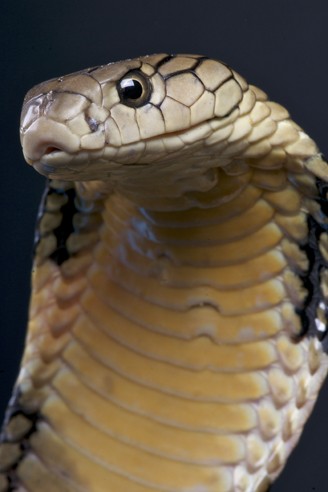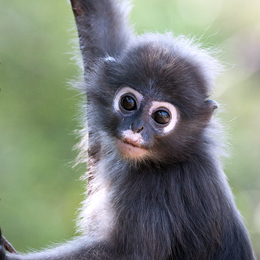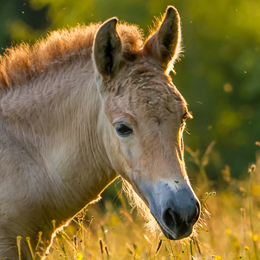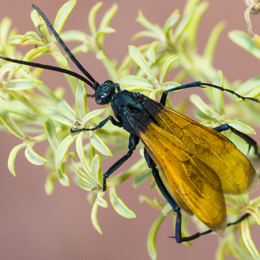Physical Description
The average size of a King Cobra is around 3,5 - 4,8 m (12 - 16 feet) with a gracefully long, slender and smooth skinned body. There have been several reports stating that this snake can reach a length of 5,5 m (18 ft), making it the longest venomous snake in the world. The average weight of the species is around 6 kg though it can be heavier if bred in captivity. The longest known specimen with a size of 5,7 m (18.8 ft) was kept captive at the London Zoo. The heaviest specimen of the King Cobra was kept at the New York Zoological Park in 1972. The snake weighed 12.7 kg and measured 4,4 m (14.4 ft).
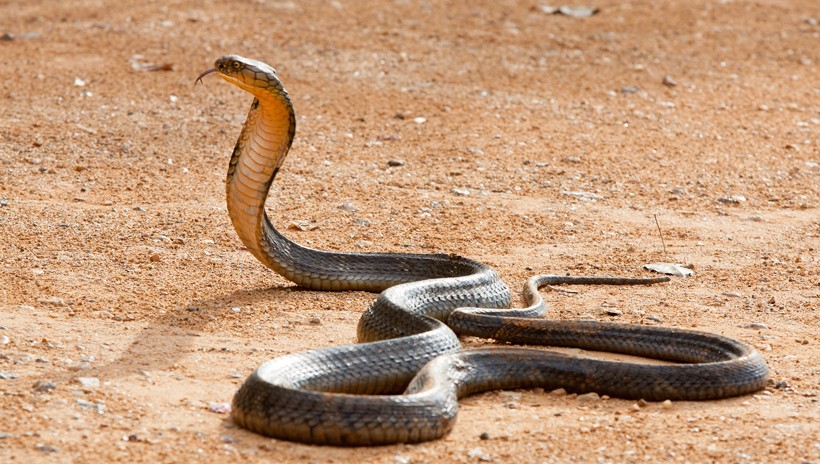
With an average length of up to 5 meters, the King Cobra is the longest venomous snake in the world.
?
Image credits: BENZINE/Shutterstock
Despite the large size and the elongated hood, King Cobras are born predators that are fast, agile and highly venomous. They can be distinguished from Asian cobras by the size of the hood which is relatively large and the chevron stripes on the neck that is a single/double eye shape in case of common cobras. This species was first described by the famous Danish zoologist Theodore Edward Cantor in one of his publications that were released back in 1836. The average lifespan of the King Cobra is around 16 - 18 years. However in captivity, it can live up to 20 years.
Habitat & Geographical Distribution
The King Cobra particularly inhabits the subtropical forests of Southeast Asia where it resides in burrows or thick bushes. It prefers dense highland forests that are dotted with streams or lakes and can also be found in grasslands. Generally, King Cobras occupy bamboo thickets brimming with potential prey or dense mangrove swamps where nesting grounds are abundant. They prefer a humid climate where the temperature is around 35 degrees Celsius (95 Fahrenheit). Therefore, the snake can often be found in sub-tropical regions. Due to habitat destruction, many King Cobras flee into agricultural areas and thus becoming exposed to humans. This had led to several incidents where they are either killed, captured or the snake attacks as an action of self-defense.
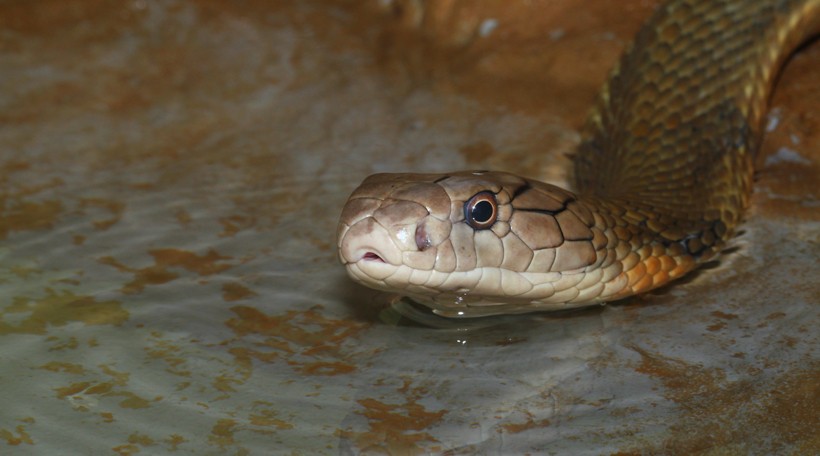
Known as a swimmer, the King Cobra inhabits forests that are located close to streams and ponds.
?
Image credits: PUMPZA/Shutterstock
The King Cobra inhabits the forests of Southeast Asia occupying regions like Bangladesh, the south of China and eastern India. Other countries like Bhutan, Burma, Laos, Indonesia, Nepal and southern parts of Philippines also maintain a certain population of the King Cobra. The species can also be found in Singapore, Thailand and Vietnam. However due to the destruction of forests, the species has suffered a massive decline in population in most of the countries listed above.
Anatomy
The King Cobra is a slender, long and agile species with a roughly-wedged head which is broad and flattened. The snake consists of an olive-green, black or tanned coloring with faint yellow cross bands that are distributed throughout its body length. The head of a mature King Cobra is massive, bulky in appearance with 15 rows of dorsal scales that run along the center. While males exhibit 235 – 250 scales along the ventral side, females have in total 239 – 265 scales. The subcaudal scales are either single or paired that further enhance the intricate scales on its glistening body. The snake sheds or molts several times a year and a new skin is grown with eye caps after every stage of molting.
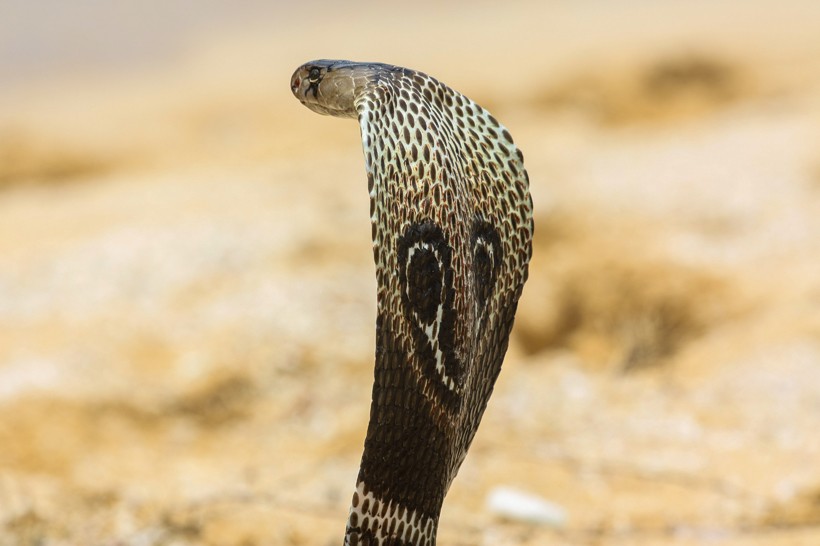
The hood is larger compared to a common cobra and spreads throughout extended cervical ribs.
?
Image credits: Bambara/Shutterstock
The hood of the King Cobra is larger in size as compared to a common cobra that flares open when the snake is agitated. It spreads throughout the extended cervical ribs that open up to unfold loose skin that is quite comparable with an umbrella. The two-inch long fangs that protrude from its mouth are long, sharp and fixed. The snake uses these fangs as a hypodermic needle to deliver venom from the salivary glands into its prey.
The jaws of a King Cobra that are hinged with ligaments stretch out wide to swallow a prey that is bigger than itself. The throat is pale yellow or cream colored and runs all the way down till its belly. While there have been certain studies suggesting that this species might have subspecies, today scientists have yet to classify any.
Diet
Known as being a facile climber and swimmer, the King Cobra inhabits forests that are located close to streams and ponds. The reason behind this is that the species prefers a tropical climate where food is abundant. A rich and blooming forest that houses a number of small rodents and reptiles make up a large part of the King Cobra’s diet. It preys primarily on small snakes, both venomous and non-venomous, birds and rodents.
Its diet includes rat snakes, pythons, cobras and kraits. In situations of scarcity, the King Cobra can also feed on birds, lizards and in some cases can also eat one of its own kind especially juvenile King Cobras.
Prey
The physical adaptations of the King Cobra make it a remarkable predator in the wild with enormous fangs that let out venom lethal enough to make a person blind. Their morphology has undergone intense research and it has been observed that the King Cobra prefers a tropical habitat that is brimming with life. The species is diurnal in nature that stays close to water and is also considered an ambush predator. The snake’s little body and streamlined structure allow it to swim easily in lakes or ponds in search of kraits (venomous elapid snakes) and smaller reptiles.
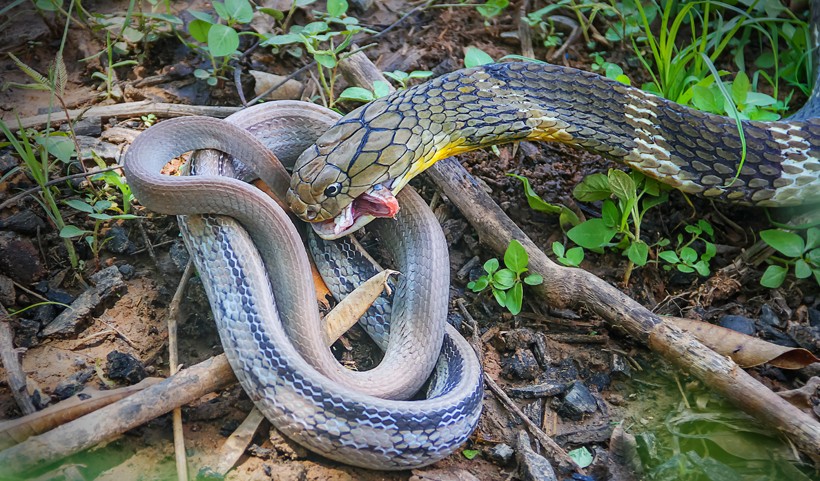
The name ‘Ophiophagus’ means ‘snake eater’ and refers to the King Cobra’s ability to devour other snakes as food.
?
Image credits: Suriya99/Shutterstock
The King Cobra has no external ears however it uses its forked tongue to collect airborne particles from the air that stimulate a sensory receptor called the Jacobson’s organ, an organ that is present in the roof of its mouth. The species picks up vibrations that ripple through its skin and pass on to the skull and further into the inner ear drum. The King Cobra also collects heat waves to sense its prey during the night, that can be 100 yards away. After consuming a large meal, the King Cobra can live without food for months since it has a low metabolic rate.
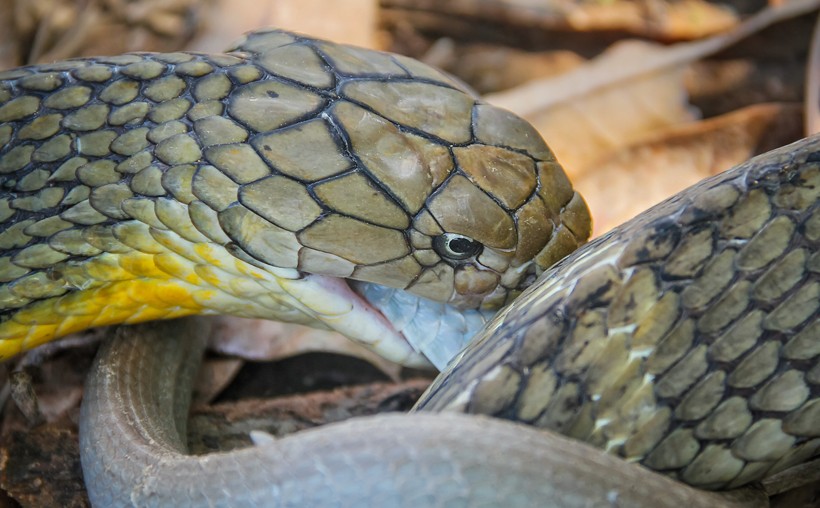
They swallow the prey whole
?
Image credits: Suriya99/Shutterstock
One of the best physical adaptations of the King Cobra is its venom which affects the nerve and the cardiovascular system. The species is capable of delivering a bite that constitutes a dose of 200 to 500 mg venom. The King Cobra’s venom is capable of killing animals as large as an elephant. Once the venom is injected the snake consumes the species whole and can sometimes wrap itself around its prey to constrict it to death. If bitten by a King Cobra, the victim usually suffers from severe pain, blurred vision, drowsiness, paralysis and ultimately death.
Predator
The King Cobra is a proud species that hardly faces any enemy in the wild. However, it does have a few natural predators like the mongoose and birds like the Golden Eagle. The species generally tends to avoid confrontation with humans but can turn to be highly aggressive if provoked. When it feels threatened, the King raises its body to one-third of its length and extends its hood showing off its fangs aggressively to the predator. The species is quite territorial and senses movements easily. It can deliver multiple bites having the ability to strike with a long distance. Large centipedes, mongoose and monitor lizards often feed on the eggs of a King Cobra.
The King Cobra inhabits dense forests and is actually quite subdued by nature. That nature is changed during the mating season. During this period, male King Cobras turn to be quite aggressive and territorial. The species tends to hiss at any of its natural predators, a sound that is often referred to as a growl. While most snakes hiss at a frequency of 3,000 – 13,000 Hz, the King Cobra growls consistently at a frequency that is below 2500 Hz. This species faces few predators other than the swift and nimble mongoose. It can be killed by humans if there is sudden exposure.
Reproductive Cycle
King Cobras are territorial during the breeding season, a time wherein female Kings give off pheromones that attract potential mates. The mating season starts in January and begins with a molt in which these pheromones are attached. A male King Cobra may fight or compete for the same female by a method known as the ‘neck wrestle’. Both snakes curl around one another and try to push down the other as an act of dominance. This is when the courtship begins and the male flicks his tongue over the female and waits for acceptance. Although many male King Cobras vie for the same female, they are known to be very picky.
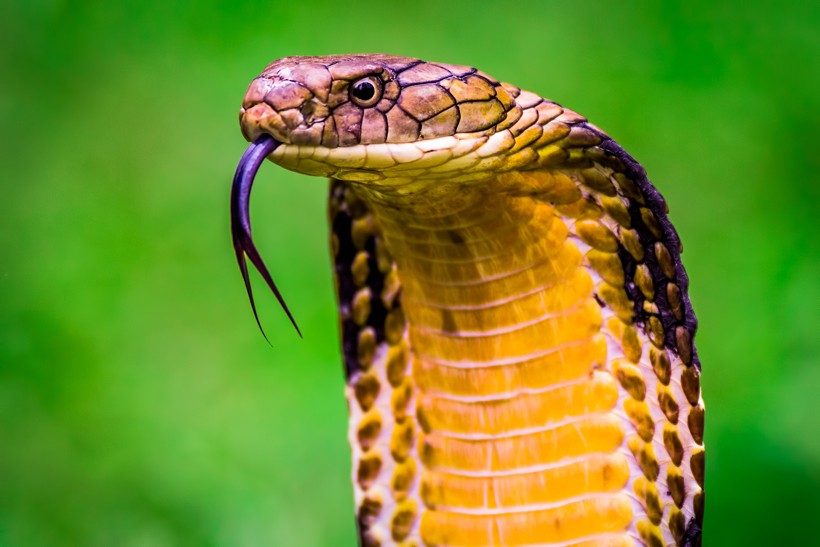
When the courtship begins the male flicks his tongue over the female and waits for acceptance.
?
Image credits: CraigBurrows/Shutterstock
The mating itself has a duration of 20 minutes at a minimum wherein the two entwine their bodies together, and are often remaining attached afterwards for hours or even days. Around eight weeks later, during the month of April or early May, the female King Cobra produces several eggs in a nest that she builds particularly using twigs and leaves. 20 to 30 days before this clutch, the female formulates the nest by collecting twigs and leaves by looping her tail around the scattered stack. The nesting mound can measure 3 to 5 meters in radius in which the female will lay around 21 - 40 eggs. The incubation period carries forward for 11 to 12 weeks wherein the female ensures that the temperature remains stable (28 degrees of Celsius) for the eggs to hatch.
While the eggs are under incubation the female behaves as a tenacious parent, guarding her mound against predators and other male King Cobras for 60 - 90 days at a stretch. During the brood care period, the female King Cobra sits on top of her nest while the male remains close by. The female King Cobra abandons the nest after the incubation period to avoid the temptation of devouring the young snakes. The young hatchlings emerge from their eggs in around 3 months having the same glossy surface with cross bands spread all over. The juvenile King Cobras born are 18 to 22 inches in length and can easily give a full charge of venom to defend itself.
Initially, the newborn King Cobra lives on the digestion of egg yolk sac inside its stomach. Once the newborn cobra has molted for the first time, which is taken place in about a week’s time, it starts to hunt. Juvenile King Cobras feed on smaller invertebrates like toads and insects. After 4 years they reach sexual maturity and soon grow into formidable predators. Juvenile King Cobras are born with proteroglyphous dentition and short fangs that can turn backwards, which helps to keep the prey caught. These fangs grow in size as they mature. Since the amount of venom used cannot be controlled by the juveniles, they are more dangerous to approach in this period.
Behavior
King Cobras are shy predators that only show their presence during the mating season, a time during which they are very territorial and aggressive. King Cobras are generally docile but may be vicious when felt threatened. They are solitary in nature and can be cannibalistic if there is a scarcity of food. There have been observations that a male King Cobra attacked a pregnant female during the mating season. This behavior had puzzled biologists for a long time before they came with a suitable explanation for this. It is now believed that King Cobras, especially aggressive males, tend to kill their own kind either for food or when a snake travels through their territory.
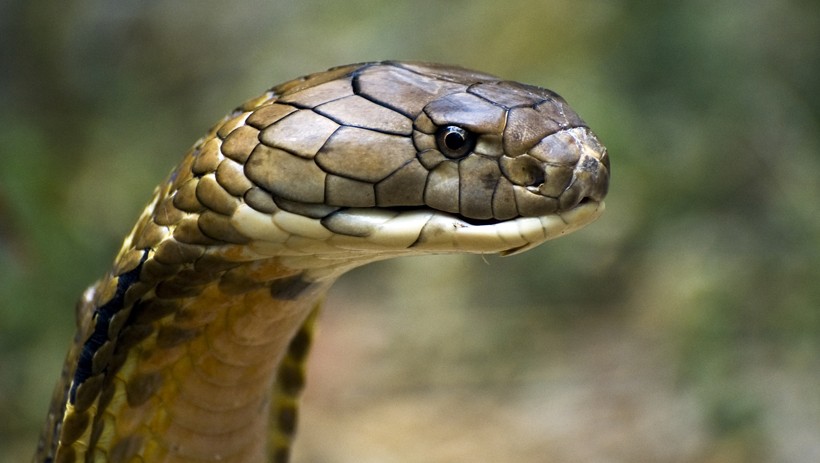
During the mating season, King Cobras are very territorial and aggressive.
?
Image credits: Heiko Kiera/Shutterstock
King Cobras have a general habit of marking their territory and don’t allow the vicinity of other males, especially during the breeding season. The species hunts during day time and is rarely seen at night. It can detect a prey on locations as far as 100 meters away. The species is quite conscious of its territory and will defend it. It possesses a rare high intelligence and is regular venerated because of that. The fact that this snake stands tall and spreads its massive hood during an encounter makes it both a fearsome and beautiful predator. The snake is a fast learner and, if bred in captivity, learns easily to distinguish between a caretaker and stranger. Even at birth, a juvenile King Cobra is alert and can flare its hood if threatened instinctively.
Despite being solitary, the King Cobra is a romantic lover and becomes social during the mating season with a female. They are intelligent creatures that can easily sense earth-borne particles giving them an acute vision of their prey and its location. The King Cobra has a mild temperament and is a very dedicated parent. To prevent attacks from predators like the mongoose or large monitor lizards to destroy its nest, the female King Cobra doesn’t leave her nest during the whole incubation period. When the King Cobra is ready to strike it coils itself, spreads its hood and raises the front end of its body. This defense mechanism is quite impressive since it does scare off many predators.
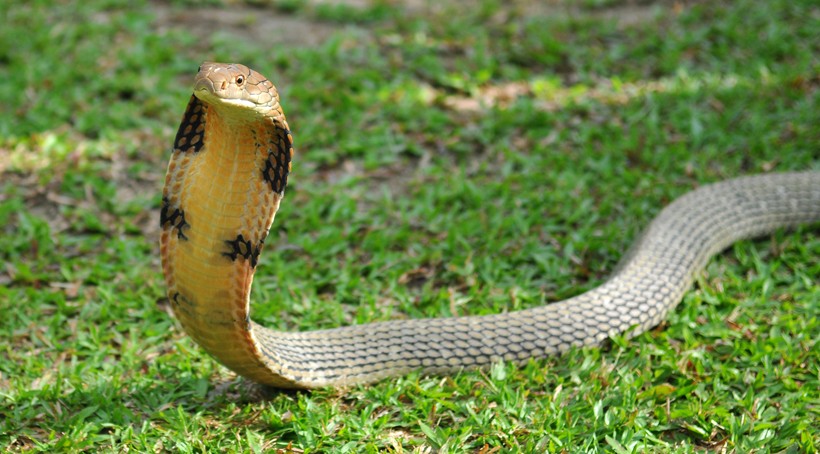
King Cobra are very alert and can flare its hood when threatened instinctively.
?
Image credits: A Periam Photography/Shutterstock
Threats
The King Cobra faces habitat loss and is captured quite often for illegal pet trade. Cultivated land area is increasing due to a high demand for agricultural products and is a major cause for habitat destruction. Nesting grounds, resting dens and burrows are destroyed and thus exposing the species to humans as a result.
According to the IUCN Red List, the King Cobra has been listed as Vulnerable and has been classified in Appendix II of the CITES. This is because Myanmar, Indonesia and Malaysia are known places where many snake farms have been established for illegal pet trade and venom trade. In India, the species has suffered a population reduction of 30% over 75 years due to continuous deforestation. Therefore, the King Cobra is now protected under the Schedule II of the Wildlife Protection Act 1972 in India. The act states that any person found guilty of hunting a King Cobra or killing it can be imprisoned for 6 years.
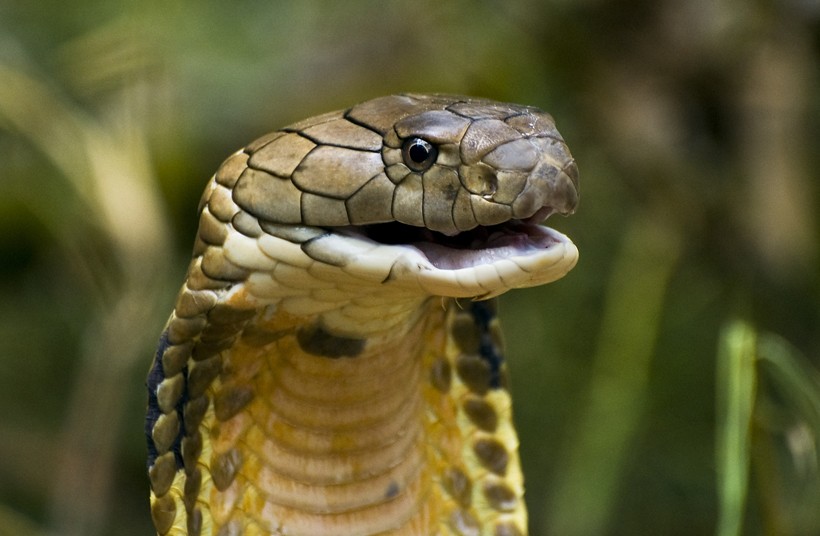
In the Chitwan region of Nepal and Vietnam, the population has suffered more than 80% decline over the last ten years.
?
Image credits: Heiko Kiera/Shutterstock
The species has disappeared in the Chitwan region of Nepal and Vietnam where the population has suffered more than 80% decline over the last ten years. The species can rarely be seen in Cambodia and Indonesia where leather trade has become an exotic trend. In China, the species has also suffered a massive decline in population due to the exploitation of its skin for medicinal purposes. The King Cobra is also traded in Java and exported to China for local or domestic consumption and trophies. In Vietnam, the population has declined severely as a result of venom harvesting, trading and the fact that this species is used to produce snake wine.
Cultural Significance
In Burma, the King Cobra is often used by female snake charmers of the Pakkoku clan which mixes the snake’s venom with ink to be used for tattooing. It is believed that such tattoos protect them against snake attack and different shortcomings.
The snake charmer is often tattooed with three pictograms and at the end of the show, the charmer kisses the snake on its head.
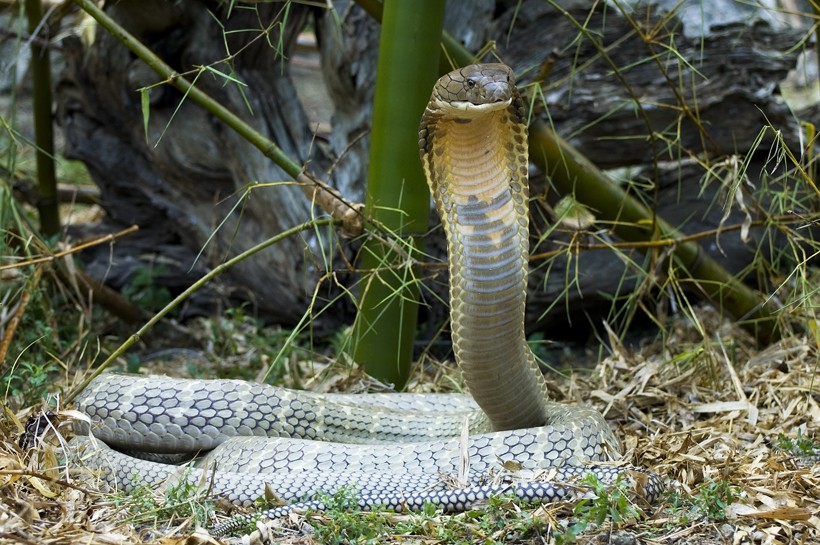
The King Cobra follows the rhythmic movements of a snake charmer’s hand and not the music since they’re potentially deaf.
?
Image credits: Heiko Kiera/Shutterstock
In India, it is believed that the King Cobra is part of a legendary myth that states the snake’s intelligence. According to the myth, the King Cobra is a creature of exceptional memory and often remembers the face of its killer. This is later picked up by the partner of the snake that roams in search of its mate’s killer seeking revenge. Because of this myth, many cobras has been killed or burnt to death in the past but the government has put a stop to this notion nowadays.
Funfacts
- The name ‘Ophiophagus’ means ‘snake eater’ and refers to the King Cobra’s ability to devour other snakes as food.
- A brewage of alcohol and ground root of turmeric can be used as an anti-venom beverage for treating a King Cobra’s bite in Thailand.
- The King Cobra is quite popular in India and is revered on an advantageous day known as ‘Nag Panchmi’.
- The King Cobra follows the rhythmic movements of a snake charmer’s hand and not the music since they’re potentially deaf.
- The King Cobra is the longest venomous snake in the world.
- A female King Cobra can hoard the male’s sperms inside the body even after the breeding season is ended to impregnate herself during consecutive seasons.
- King Cobra venom is used in the form of synthetic medicine to relieve pain and treat arthritis.
- The King Cobra has the longest forked tongue of all snake species.
- A unique physical adaptation of the King Cobra is its ability to jump which can be a distance of one-third of its body length.
